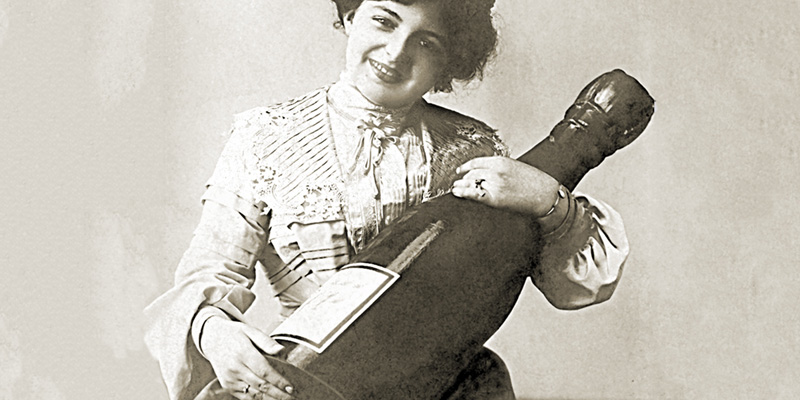Despite what Instagram and Twitter trends might have you think, the holidays aren’t the only time for magnums of Champagne or three-liter bottles of Pinot Noir. While the holidays provide an easy excuse for buying wine in excessively large bottles, so do Tuesdays, book clubs, and dinners all year long.
As a good friend once said, “A magnum is the perfect amount of wine for two people if only one of them is drinking.” And let’s be real, in exceptionally good (or bad) company, that’s totally true.
Here are some reasons you should be drinking from big bottles all year long:
Large bottles age better
Wine ages as air moves in and out of the cork, interacting with the flavor components of a wine. With large format bottles, you’ve got the same surface area for air transfer — that tiny cork — but a much larger volume of wine. The result is that these bottles age at half the speed of their 750 ml counterparts.
It’s because of this aging potential that many top-notch wines are bottled in large formats. Big bottles age more gracefully and just plain better, according to some experts, because they age at a slower pace. As a result, producers typically bottle a portion of their best blends into large bottles to see their evolution, and mark them up accordingly for collectors.
Because these bottles can reach extremely high prices, they’ve earned a reputation for being expensive and “celebration-only” bottles. Happily, as wine has become more mainstream and less exclusive, so have magnums. You can now find great options in most small retailers.
Trophy bottles are durable
I know this sounds counterintuitive, but child-sized bottles are more durable than infant-sized 750 mls. That’s because larger bottles are made with thicker, heavier glass to protect them from wine’s major enemies: heat, light, and travel-related vibrations.
Most large format options are bottled in dark green as opposed to clear glass, which keeps out harmful light. That thick glass also takes longer for summer heat or frigid winter temperatures to infiltrate, either cooking or freezing the juice inside. Lots of vibration, like the kind you get being shipped around the world, can also damage wine, and that thick, heavy glass absorbs more shock than the thin stuff that encases most of our everyday drinking wine.
What all that really means is, if you’re traveling, definitely take home (or bring) a magnum with you. Likewise, added durability means you can feel safe storing magnum bottles at home in a cabinet or on a countertop, since most small wine fridges (and regular fridges) don’t hold large format bottles well.
Magnums can be a bargain
Trophy bottles are known for being expensive, especially on restaurant wine lists, but if you look carefully, large format wines can be a bargain for savvy shoppers.
You won’t find oversized deals on magnums of red wine from iconic regions like Napa, Bordeaux, or Champagne, where wines are known to age for decades. These producers use big bottles to up the prestige of their wines, often knowing collectors will pay anything to get them.
But smaller producers from unique or up-and-coming regions often package fantastic wines in these containers and offer a markup that’s easy to love. Pet-nat sparkling wines, rosé, and magnums from countries like Portugal, or California’s Lodi region, offer exceptional value.
In some cases, the slower aging in magnums can make them an even better deal. For example, most rosés are designed to be chugged during the current vintage; they start to lose value as they age. However, large format rosés will still taste fresh and fruity well beyond their vintage, since they aren’t aging as quickly as standard bottles. In turn, that can mean big deals as retailers try to offload enormous, happy bottles of rosé.
If you’re traveling, tasting rooms are another place to get one-of-a-kind bottles for a steeply discounted price. Wineries often release back-vintage, or “library” wines without additional markup, so the 2005 magnum of Zinfandel is the same price it was 10 years ago, a deal that won’t pop up in any retail or restaurant environment.
They’re fantastic centerpieces and craft bases
Big bottles are just plain impressive, no matter the occasion. From the start, a big bottle screams celebration and sets a dramatic tone for everything from Super Bowl parties to date night. Plus, using a magnum as a centerpiece removes the need to build a time-consuming Martha Stewart-approved tablescape. Plus, watching your friends pick up a heavy, empty bottle and try to pour from it never gets old.
Leftover magnum and three-liter bottles are also fantastic bases for Pintrest-approved bottle crafts and creative home décor projects. Lamps, candleholders, and vases are all an easy afternoon project with a bottle, some glitter, and a glue gun, though I don’t recommend drinking a magnum during construction.
Next time you’re on a wine shopping spree, don’t power past the large format display and dive into the clearance section. Big bottles need love, too.

